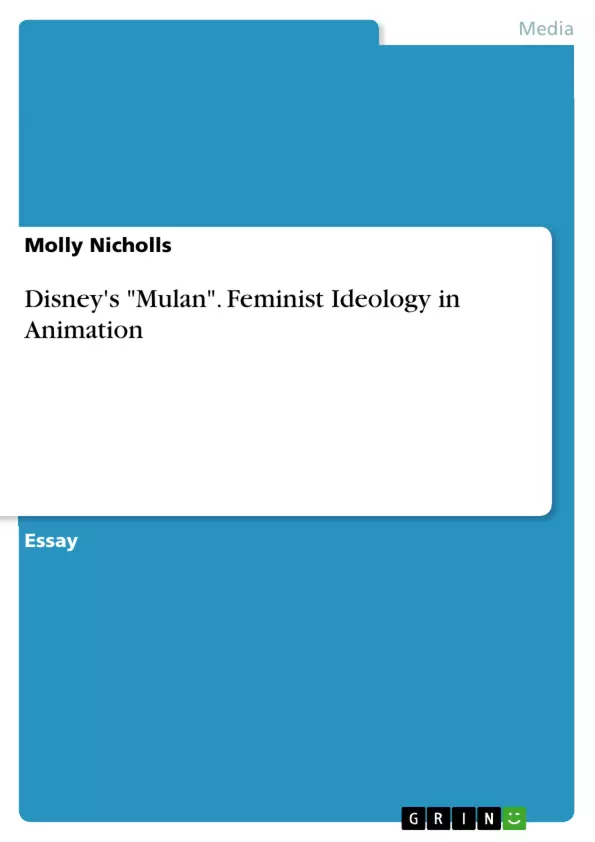Animation holds the power to create a narrative of hidden connotations and therefore the ability to distort reality from fairy-tale.
This power has led to animation becoming a key way to express ideologies that go against hegemonies. One of the revolutionary narrative discourses in targeting feminist ideologies is that which redefines traditional characteristics of femininity.
In discovering the influences on media culture and its development we can be drawn to Disney, as a hugely influential and globally popular animation company, specialising in targeting children with the ability to draw adults into its deeper more sinister relations.
Disney’s 1998 film "Mulan" (1999), is a westernised adaptation of the Chinese tale of Hua Mulan, a legendary figure from ancient Chinese culture about a girl who took her weak fathers place to fight in the army, as a ploy to save him from almost certain death.
Table of Contents
- Feminist Ideology within Disney's Mulan (1999)
- Mulan's Transition into a Male Soldier
- The Matchmaker and Traditional Femininity
- Mulan's Voice and the Cult of Tradition
- Expectations of a Woman and Female Passivity
- Mulan's Masculine Demeanour
- Mulan's Self-Doubt and Strength
- The Clichéd Romance and Mulan's Individuality
Objectives and Key Themes
This analysis examines how feminist ideology is presented in Disney's animated film "Mulan" (1999). The objective is to assess the ways in which the film both challenges and reinforces traditional notions of femininity in a Chinese cultural context.
- Gender Oppression and the Cult of Tradition
- Feminine Identity and Individuality
- Social Mobility and the Male Gaze
- The Impact of Westernized Adaptations on Feminist Ideology
- The Role of Disney in Shaping Feminist Discourse
Chapter Summaries
- The first section explores Mulan's decision to take her father's place in the army, highlighting her desire to break free from traditional gender roles and seek individual fulfillment.
- The second section focuses on the encounter with the matchmaker, revealing the social constraints imposed upon women in ancient China and the pressure to conform to traditional feminine expectations.
- The third section examines Mulan's voice and the social sanctions against women speaking up or challenging male authority, emphasizing the theme of gender performance and the constructed nature of femininity.
- The fourth section analyzes the portrayal of female passivity and dependency in Disney films, discussing how Mulan both challenges and perpetuates these traditional ideologies.
- The fifth section delves into Mulan's masculine demeanor, exploring the tension between defying gender norms and embracing femininity in a patriarchal society.
- The sixth section examines Mulan's moments of self-doubt and her eventual triumph over societal pressures, highlighting the complexities of female identity and the struggle for self-acceptance.
- The final section discusses the controversial ending, where Mulan accepts a romantic relationship with Shang Li, and the potential implications for feminist ideology.
Keywords
This analysis focuses on feminist ideology, gender oppression, traditional femininity, Chinese culture, Westernization, Disney, Mulan, gender performance, social mobility, male gaze, individual identity, and the impact of media culture on feminist discourse.
- Quote paper
- Molly Nicholls (Author), 2015, Disney's "Mulan". Feminist Ideology in Animation, Munich, GRIN Verlag, https://www.grin.com/document/302296



